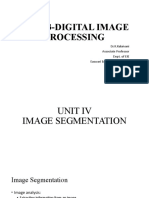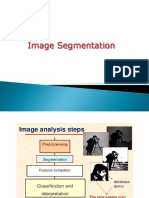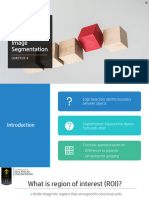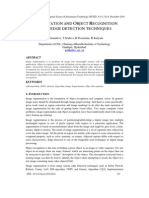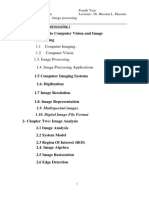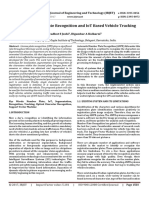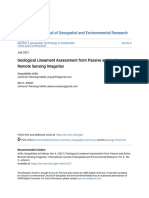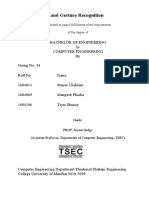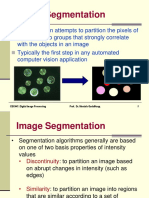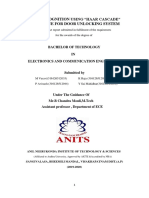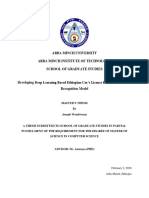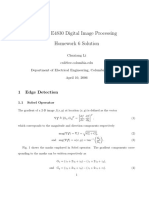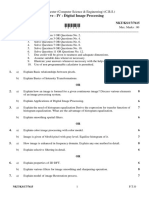0% found this document useful (0 votes)
36 views37 pagesChapter2 Segmentation
The document discusses image segmentation techniques. The goal of image segmentation is to partition an image into meaningful regions or objects. Key techniques discussed include edge detection using gradient methods like Sobel, Prewitt, and Canny edge detection. Region-based methods include region growing, histogram thresholding, and split and merge segmentation. Edge detection finds boundaries between objects while region methods group similar pixels into segments. Image segmentation is useful for tasks like object recognition, tracking objects in video.
Uploaded by
asmaaCopyright
© © All Rights Reserved
We take content rights seriously. If you suspect this is your content, claim it here.
Available Formats
Download as PDF, TXT or read online on Scribd
0% found this document useful (0 votes)
36 views37 pagesChapter2 Segmentation
The document discusses image segmentation techniques. The goal of image segmentation is to partition an image into meaningful regions or objects. Key techniques discussed include edge detection using gradient methods like Sobel, Prewitt, and Canny edge detection. Region-based methods include region growing, histogram thresholding, and split and merge segmentation. Edge detection finds boundaries between objects while region methods group similar pixels into segments. Image segmentation is useful for tasks like object recognition, tracking objects in video.
Uploaded by
asmaaCopyright
© © All Rights Reserved
We take content rights seriously. If you suspect this is your content, claim it here.
Available Formats
Download as PDF, TXT or read online on Scribd
/ 37













